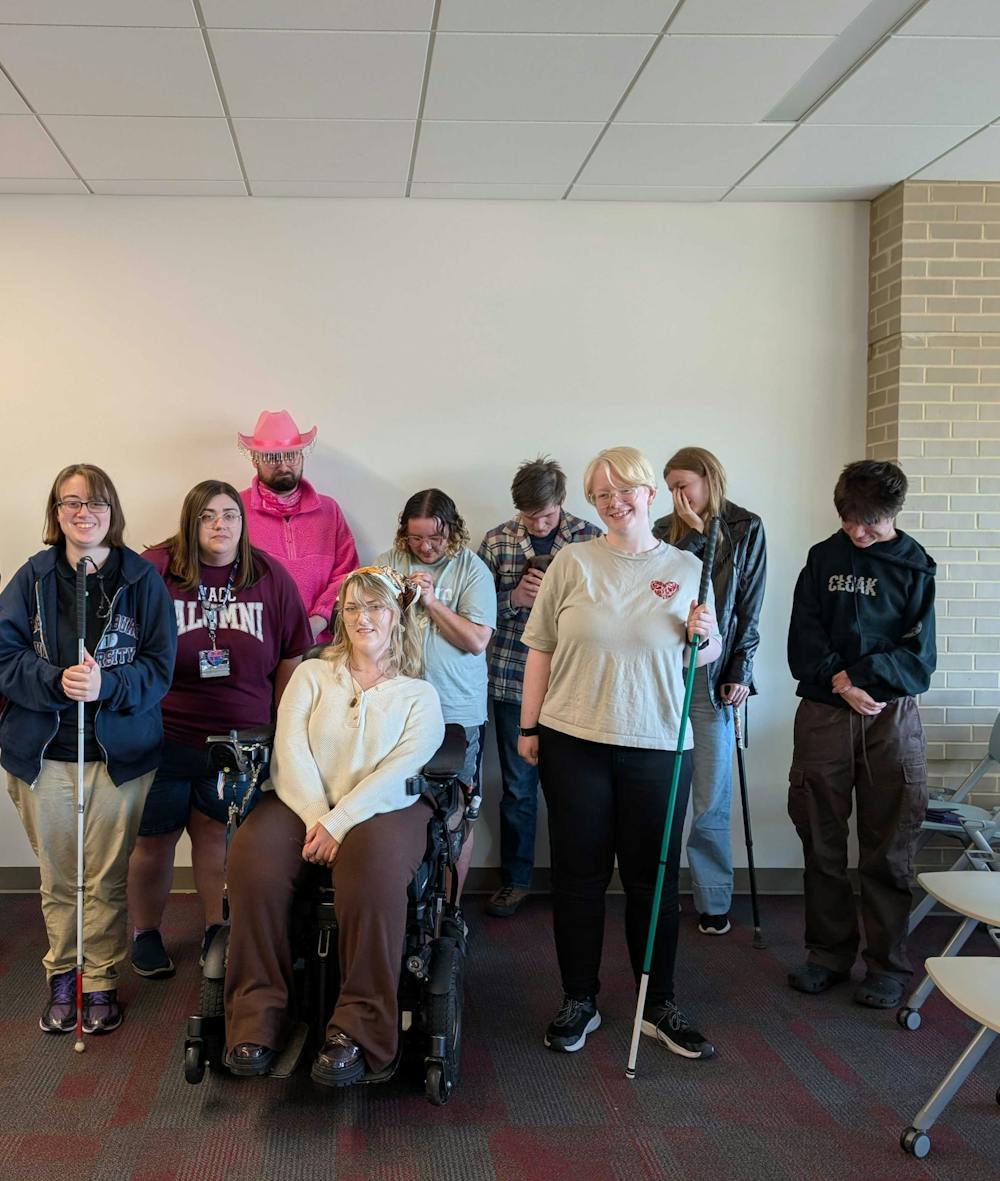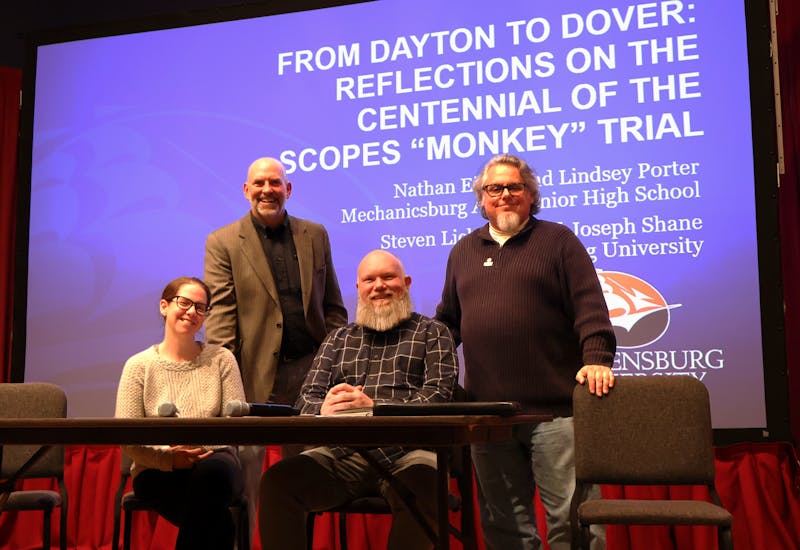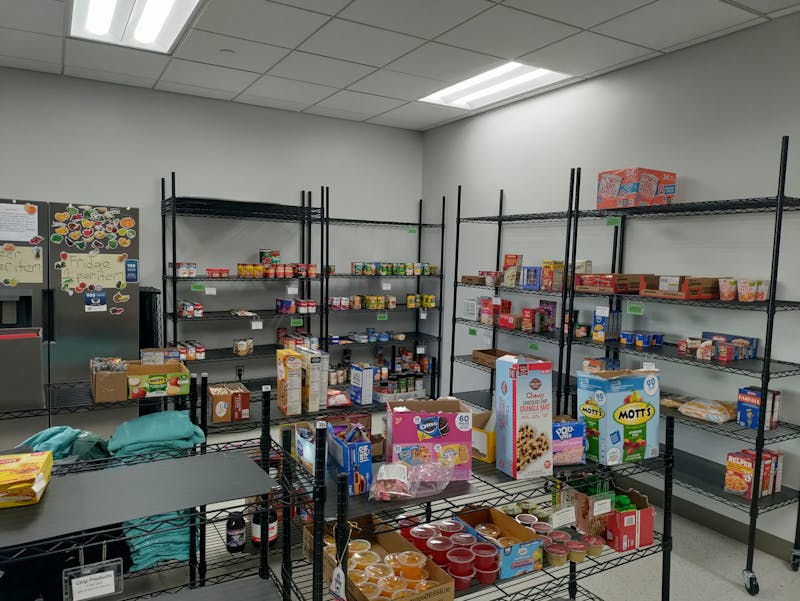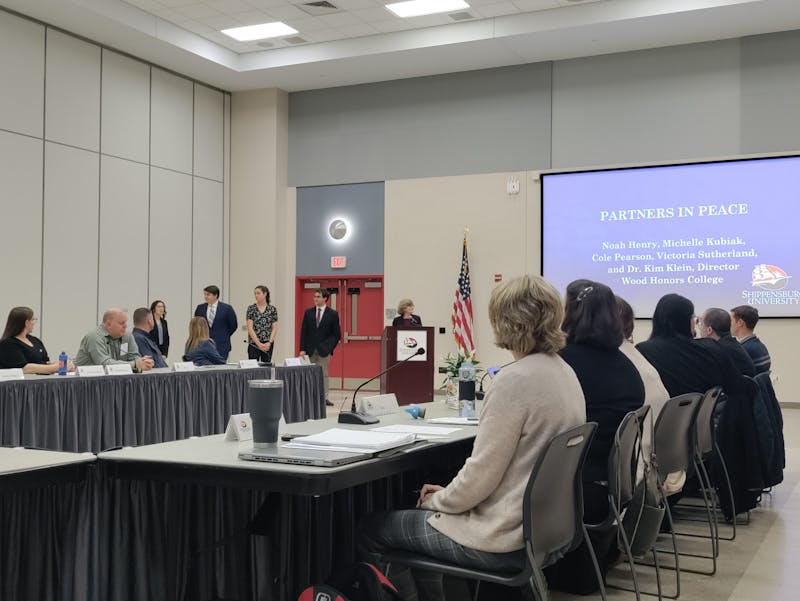Shippensburg University’s Disabled Students Union is pushing to make campus more accessible for students with disabilities, both in its infrastructure and awareness. The student-led organization was formed last year, and it has become a place for advocacy, resource-sharing and community support.
For many members, the group’s mission stems from daily challenges navigating a campus not built with accessibility in mind.
“I do not feel as though anyone is out to get me,” said Natalie Nichols, the DSU’s member disciplinary officer. “But I very frequently feel reminders that this world, and by extension, this campus, were not made with someone like me in mind.”
Nichols and public relations director Eliot Chute said the DSU’s revival began when students noticed that many accessibility issues fell outside the scope of the Office of Accessibility Resources (OAR). While they praised the office for its support, they saw the need for a student voice to address broader systemic and cultural barriers.
“We love OAR,” Nichols said. “They’re a godsend. But sometimes you want to turn up the heat, and you want to do that without causing problems for them.”
For students with mobility or sensory impairments, parts of campus can be difficult to navigate. The sloped pathways, steep hills and limited signage often make it harder to move between classes or reach key buildings.
“I actually got lost and separated from my orientation group because I was winding around to find an accessible route,” Chute said. “It’s very obvious this campus wasn’t built with accessibility in mind.”
Even when accessibility features exist, they do not always meet students’ needs. Nichols said some ramps are too steep, visual indicators at crosswalks are worn down and automatic door buttons are often broken or poorly placed.
“There’s an effort, but sometimes it’s stopped by infrastructure, poor planning or ignorance,” she said. “There are things you don’t have to think about, so you don’t include them. And sometimes that means some people stay home.”
Accessibility issues extend into the classroom, where some professors struggle to accommodate students effectively when unexpected situations arise. Chute recalled a recent experience when he forgot to schedule a test through the OAR and asked his professor to take the exam at a later date. Instead, the professor required him to take the test with the rest of the class.
“The font was so tiny that I got a headache that lasted all day,” Chute said. “Pain is a trigger for my fainting condition, so that could have caused a lot more problems. We’re not trying to inconvenience anyone. We’re trying to be there and work with you.”
Nichols said that kind of experience is common.
“My accommodations don’t make class easier,” she said. “They make class possible to begin with.”
The DSU’s work focuses on both education and practical solutions. The group has already organized fundraisers to help students afford accessibility devices, such as crutches and mobility aids. They are also developing tools to help others communicate with professors about their needs.
“It’s frightening to have to tell a professor, ‘You need to change your behavior or else I cannot succeed in this class,’” Nichols said. “We’re putting together an email toolkit so students can just fill in their name and details. That small thing makes it a lot easier to advocate for yourself.”
Another major project underway is a comprehensive accessibility map of campus. While the university provides a basic map showing ADA-compliant routes, the DSU wants to include more practical peer-to-peer information, such as steep hills, areas with heavy foot traffic and the safest paths for students with visual impairments.
“There’s no map that tells you which hills are steeper or where crowds usually form,” Chute said. “That’s all needed. People deserve to know what routes work best for them.”
Beyond their ongoing projects, the DSU has identified several major gaps in campus accessibility. Nichols said the lack of fire safety training for resident assistants and staff puts disabled students at risk during emergencies.
“There’s minimal signage about what to do if you can’t use the stairs,” she said. “It sucks to sit there and think, ‘Sure hope nothing’s on fire this time,’ because you have to wait for someone to remember to come get you.”
The DSU is also advocating for more automatic door buttons and updates to tactile paving, which helps visually impaired students navigate crosswalks.
“Some of the truncated domes are worn down or lead straight into the middle of the road,” Chute said. “You’d be surprised how many places on campus have curb cuts but no visual indicators.”
Despite the challenges, both officers describe the DSU as a space of solidarity and resilience. Members come together not only to advocate for change, but also to share experiences and support one another.
“It’s a safe place to talk about things that other people might not understand,” Chute said. “You can say, ‘That hill over there is really bad,’ and everyone gets it. Then we can say, ‘OK, what can we do about it?’”
Nichols said that sense of community is vital.
“Even if there isn’t instant friendship, there’s solidarity,” Nichols said. “These are people who are used to being resourceful and figuring things out.”
The DSU’s officers recognize that change will not come overnight, but they are determined to keep pushing for progress.
“We didn’t want to make a space that’s just upset,” Nichols said. “We get it. We’re upset too. But someone has to do something, and we have the time and tools to do that.”
For Chute, optimism is part of the fight.
“When you’re fighting for basic rights and just being allowed to be human, you have to be optimistic,” he said. “If you’re always negative, you’ll do nothing. We’re here to do something.”





The Slate welcomes thoughtful discussion on all of our stories, but please keep comments civil and on-topic. Read our full guidelines here.